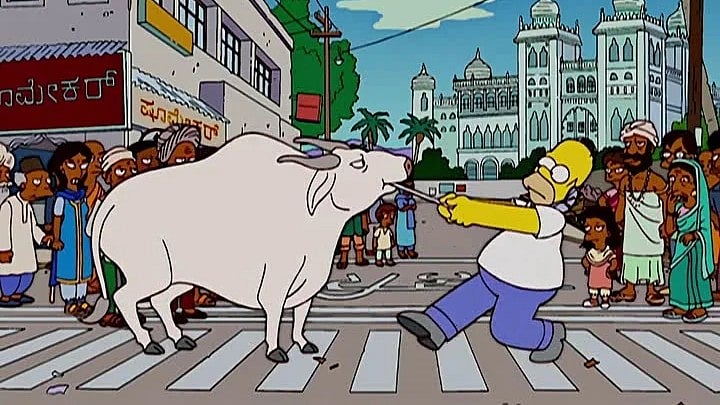
Credit: Special Arrangement
There are cities that introduce themselves with spectacle. Bengaluru has never been one of them. It has spent most of its history building quietly, solving problems, and letting the results travel farther than introductions ever could. Yet, when the world turns its attention to culture, the city keeps appearing in the frame. Not by request. Simply because it belongs there.
Long before the city wrote software, it engineered impact. Steven Spielberg’s ‘Saving Private Ryan’ (1998) features the Bangalore torpedo, clearing a path through Omaha Beach. The tool was designed by the Madras Sappers, headquartered in Bengaluru, long before cinema discovered digital armies and invincible superheroes. The name survived, resurfacing in films and video games whenever a blockade needed clearing.
Hollywood’s later encounters with the city are quieter but still noticeable. ‘Mission: Impossible Ghost Protocol’ (2011) may officially be set in Mumbai, yet Kannada signage appears in the frame. And when the antagonists enter a media office, the façade closely resembles the Sun Group building on Brunton Road. It is a small detail, but the city appears even when the script forgets to mention it.
Cinema may have noticed Bengaluru by coincidence, but television recognised it with clearer intent. In ‘The Simpsons’ episode ‘Kiss Kiss, Bang Bangalore’ (2006), the city appears as the universal shorthand for outsourcing, powered by familiar punchlines about call centres and code. The jokes are broad, but they land only because viewers already know exactly which city is being teased.
Streaming platforms eventually offered a more grounded portrait. ‘Crime Stories: India Detectives and Indian Predator: Beast of Bangalore’ (2022) focused on police stations, ordinary neighbourhoods and late-night investigations. The city that once existed as a cartoon exaggeration returned as a real place with real stakes. The neon clichés switched off, but the attention stayed on.
Music brought its own translation. In 2007, Iron Maiden filled Palace Grounds and left with footage that later appeared in Sam Dunn’s ‘Global Metal’, officially putting Bengaluru on a map that rarely extends to India. The documentary did not treat the crowd as an exception. It treated them as a scene. Rap took that confidence further. On ‘Chuck Taylor’, Connor Price and SIRI drop ‘Bengaluru lingo, counting my digits, see me yelling out bingo’ into a global hook without pausing for explanation. Kannada sits comfortably between beats designed for international rotation. The lyric does not ask to be understood. It assumes it will be.
Words, however, had already laid the foundation. In 1903, Arthur Conan Doyle wrote Colonel Sebastian Moran as ‘formerly of the 1st Bangalore Pioneers’ in ‘The Adventure of the Empty House’. It is a single detail about a villain in Victorian London, but it cements the city in a global literary memory long before hashtags pretended to measure relevance. Bengaluru slips into the canon without insisting on relevance. It is simply listed as fact and allowed to stay.
Games have embraced the city’s name with remarkable ease. In ‘Apex Legends’, a character named Anita ‘Bangalore’ Williams carries it into battle, her precision shaped by a heritage that understood discipline long before it understood code. The Bangalore torpedo makes a return in the gaming world through ‘Call of Duty’, clearing digital obstacles much like it once cleared real ones. And while players traverse these virtual battlegrounds, studios like DNEG in Bengaluru work quietly on the visuals that make such worlds feel believable. Entire galaxies, skylines and universes often pass through the city long before they reach the screen.
Perhaps the most telling sign of influence is how easily it goes unnoticed. Bengaluru appears, contributes and steps away before the applause begins. It shapes what people watch, listen to and play, without insisting that anyone take note of the source. A familiar name in the credits, a passing reference in a script, a beat in a rap track, a tool in a virtual arsenal. Small details that rarely shout, but slowly accumulate.
That quiet presence has travelled far. It has moved from trenches to theatres, from detective fiction to streaming thumbnails, from concert stages to code screens. It has shown up wherever culture moves next, sometimes surprisingly and sometimes as if it had been there all along. The city may move quietly, but its influence does not, even if the traffic often steals the noise.